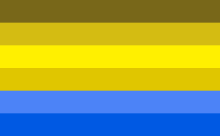Colour is so important to us. One of the reasons humans have evolved into such a successful species is our ability to distinguish lots of different colours. Many animals cannot see red tones, so in a jungle, a tiger doesn’t look orange to it’s prey, it looks browny-green, thus easily blending into the landscape, but to humans, we see the colour and can more quickly act to avoid being lunch.
Inside our eyes we have around 120 million rods and 6-7 million cones. The rods are sensitive to light and dark, seeing colours in the black, white,grey spectrum , the cones to colour, which pick up either red, blue or green colours.
1 in 10 men have some colour deficit and 1 in 200 women have the same problems picking up the differences in colour.

How someone sees colour who has full colour vision
There are different sorts of colour blindness

Protanopia – the complete absence of the ability to pick up red

Deuteraonopia – the green retinal photoreceptors are absent, moderately affecting red-green hue discrimination..

Tritanopia is a very rare color vision disturbance in which there are only two cone pigments present and a total absence of blue retinal receptors
If you want to see more examples of what people see (really important if you’re designing something) this is a useful link.
Pics courtesy: Wikipedia














This is so NEAT! I had a boyfriend who was blue/green colorblind, and I always wondered how he saw the world.
Thanks!
Fascinating!! I had no idea that there were different types.
xo+pbc
Yep.
And if you want to get really technical about it, the rods are most sensitive to what we think of as a "blue" wavelength of light. Except that you can't tell that it's blue, because rods are only active in very low light level situations (too low for cones to work), and you have only one kind of rod, so your visual system can't do the sorts of comparisons that leads to colour perceptions.
Which is why dim red light is used in situations where you want to preserve your night vision. The red light is juuust bright enough to activate your cones, so your vision is sharp and good, but in an emergency (for example) you can shut off all the lights and be able to function in near-darkness almost immediately.
Colour is fascinating, and involves all kinds of biology and physics and culture. Love your blog, Imogen!
Great post and examples! I would have never thought to do a post like this. And my father is an eye surgeon so I grew up around fun stuff like this! He was always practicing with his color-blindness tests on us during his training. Maybe I need to get him to write a guest post!
My husband is color blind. I am afraid that our children and I chuckle often whenever he wrongly identifies the colors of objects.
There's an older issue of "National Geographic" that features a fascinating article about this subject. In this article, I was appalled to discover how ghastly the color of some foods appear to color blind people, such as my husband. Of course, it's all my husband has ever known, so these off colors are equated as "mouth-watering delicious."
By the way, I always to assist my husband when he coordinates his clothing.